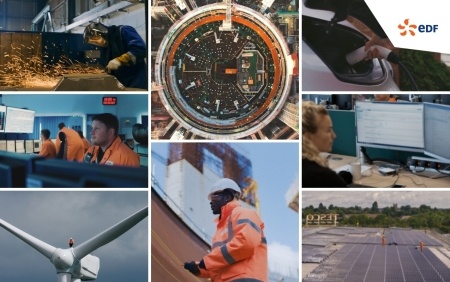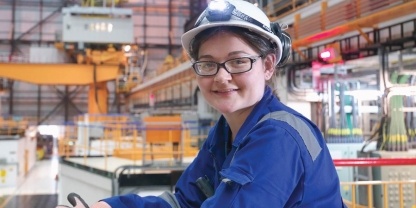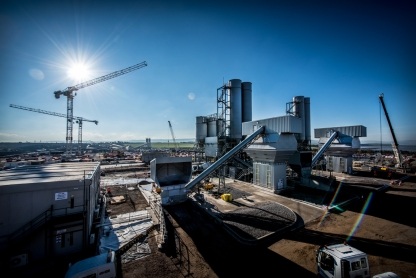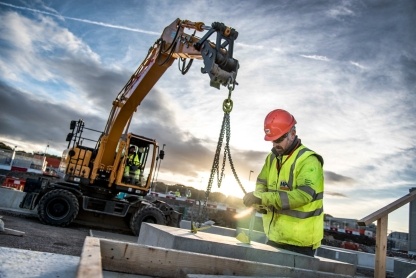EDF Group results 2016 – highlights for EDF Energy in UK
The worldwide EDF Group’s Annual Results for 2016 have been published this morning. These relate to the performance of the entire EDF Group, and include a summary of EDF Energy’s performance in the UK.
EDF Energy will provide a detailed breakdown of how each part of its business has performed when it publishes its annual segmented accounts before the end of April this year.
EDF Energy in 2016 - key points
- Hinkley Point C – EDF signed contracts with the Government and its Chinese partner CGN on 29 September 2016. This allowed the project to be fully launched, consultation to move ahead for Sizewell C and licensing and development activity to begin at Bradwell.
- Existing nuclear power stations achieved their highest output since 2003. Output was 65.1 TWh which is 4.5TWh higher than in 2015.
- Excellent safety performance at our power stations resulted in the lowest number of ‘lost-time’ incidents in the company’s operational history.
- Underlying operating profit (EBIT) in 2016 was £470m. This was 29% lower than in 2015 (£664m) and was driven mainly by lower wholesale prices.
- EDF Energy reinvested much of its operational profit back into the business. The total investment in 2016 in existing nuclear, coal, renewables and customers was £675m. Investment in new nuclear in 2016 totalled £860m.
- EDF Energy Renewables opened two new wind farms at Pearie Law and Corriemoillie in Scotland and won a contract from National Grid to provide 49MW of battery storage.
New nuclear
The construction of Hinkley Point C has now been fully launched. More than 1,200 people are working on the site each day and the project is making good progress. HPC has awarded contracts in the South-West of around £500m, creating 650 jobs and the project is already boosting skills and industrial capability across the UK.
The second stage of public consultation for Sizewell C has been completed.
The nuclear regulator, the Office for Nuclear Regulation has been asked to begin the Generic Design Assessment for the UK HPR1000 power station which is due to be built at Bradwell.
Generation
The output of the nuclear fleet in 2016 was 65.1TWh, an increase of 4.5TWh on the previous year and the highest achieved since 2003.
This exceptional performance has been made possible through EDF Energy’s continuing investment in its existing power stations which was £529m in 2016.
During a period of depressed prices, an effective Carbon Price Floor and Capacity Market have been critical in giving EDF Energy the confidence to invest and extend the operating lives of these power stations, providing the UK with reliable, low carbon electricity.
Our coal stations are in a transitional phase and have a dramatically reduced role in electricity generation. Our teams are responding very well and our stations are ready when they need to be to respond to calls from the National Grid.
Customers
EDF Energy has continued its focus on customer service with its best ever score in the Citizens Advice Bureau customer complaint table. It has continued with steps to reduce operating costs. In an intensely competitive market, EDF Energy ended 2016 with 5.2m customer accounts, just 80,000 fewer than in 2015. It continued to make choosing tariffs easy, with a “Show me Your Bill” campaign and has around 45% of customers on fixed tariffs including 60% of vulnerable customers. In 2016, EDF Energy installed 130,000 Smart Meters.
EDF Energy CEO Vincent de Rivaz said:
“The exceptional performance of EDF Energy’s existing nuclear power stations is making a huge contribution to security of supply and providing large volumes of reliable, low carbon electricity. Our new nuclear power station at Hinkley Point C will play a vital role as the UK continues to make the transition away from fossil fuels. The project is making good progress and is already delivering significant benefits to the national and regional economy, creating jobs and boosting skills and industrial capacity. Our investment in renewables and innovative battery technology is further evidence of our ambition to be at the forefront of the UK’s low carbon future.”
“We continue to focus on providing the best possible customer service and bringing innovation to energy use at home. In 2017 we will step up our programme to install smart meters. We are currently installing 900 a day. This will increase to 2,300 smart meters a day by the end of the year. Our Blue Lab innovation accelerator is trialling and developing solutions which will transform our customers’ relationship with energy. Our customer numbers are broadly stable in an intensely competitive retail market.”
Excluded from the underlying EBIT in 2016 is a one-off impairment charge of £66m, mainly due to the reduction in the value of gas storage assets.
For more information contact:
Ben GeogheganSenior External Communications Manager
0207 752 2626
07736 480205
Ben.Geoghegan@edfenergy.com
Claire Barratt
Senior external communications manager - Customers
07875 113377
claire.barratt@edfenergy.com
Notes to editors
EDF Energy’s financial performance as measured by earnings before interest, tax, depreciation and amortisation (EBITDA) was £1,399m. EBITDA in 2015 was £1,624m. This means EBITDA was 14% lower in 2016.
Glossary of terms
Earnings before interest and tax (EBIT) / Operating profit
This is a company’s ‘operating’ profits before payments for tax and interest payments are included. The charge for depreciation and amortisation is included in the operating profit figure.
Earnings before interest, tax, depreciation and amortisation (EBITDA)
This is effectively the company’s net income from selling energy minus its operating expenses, but it excludes the significant costs involved in repaying loans, paying tax and the declining value of the assets it owns (e.g. buildings, power stations and equipment).
It also does include the amount a company must invest to maintain existing assets or build new power stations.
Amortisation
This reflects the value of non-physical assets owned by the company such as copyright or patents.
EDF Energy
EDF Energy is the UK’s largest producer of low-carbon electricity, meeting around one-fifth of the country’s demand and supplying millions of customers and businesses with electricity and gas.
It generates electricity with eight nuclear power stations, more than 30 wind farms, one gas and two coal power stations, as well as with combined heat and power plants.
EDF Energy is leading the UK's nuclear renaissance with the construction of a new nuclear power station at Hinkley Point C. This will provide low carbon electricity to meet 7% of UK demand. The project is already making a positive impact on the local and national economy, British industry, as well as boosting skills and education. EDF Energy also invests in a range of low carbon technologies including renewables and battery storage. It is applying research and development expertise to improve the performance of existing generation and developing the potential of new technologies.
The company provides gas and electricity for more than 5 million customer accounts and is the biggest supplier of electricity by volume in Great Britain and the largest supplier to British businesses. It offers innovative energy systems for commercial customers and digital innovation for customers at home. EDF Energy has also launched its own innovation accelerator, Blue Lab, which focuses on making customers’ lives easier.
Through its Better Energy Ambitions, EDF Energy has developed comprehensive environmental and social programmes which have been recognised by a wide range of organisations.
EDF Energy is part of EDF Group, the world’s biggest electricity generator. In the UK, the company employs around 13,000 people at locations across England and Scotland.
Related articles
EDF response to Government energy announcements



